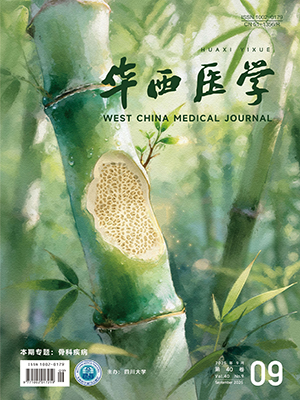| 1. |
Saposnik G, Barinagarrementeria F, Brown RD, et al. Diagnosis and management of cerebral venous thrombosis:a statement for healthcare professionals from the American Heart Association/American Stroke Association[J]. Stroke, 2011, 42(4):1158-1192.
|
| 2. |
Borhani Haghighi A, Edgell RC, Cruz-Flores S, et al. Mortality of cerebral venous-sinus thrombosis in a large National sample[J]. Stroke, 2012, 43(1):262-264.
|
| 3. |
Wasay M, Kojan S, Dai AI, et al. Headache in cerebral venous thrombosis:incidence, pattern and location in 200 consecutive patients[J]. J Headache Pain, 2010, 11(2):137-139.
|
| 4. |
顾晓苏, 徐得恩, 周永. 颅内静脉窦血栓形成的临床与影像学特点[J]. 临床神经病学杂志, 2012, 25(2):111-114.
|
| 5. |
朱德生, 张悦, 管阳太. 脑静脉窦血栓形成的临床与影像学特点[J]. 临床神经病学杂志, 2013, 26(4):268-271.
|
| 6. |
唐宇凤, 段劲峰, 吴孝苹, 等. 颅内静脉窦血栓形成导致中枢性视野缺损的临床特点(附3例报告)[J]. 临床神经病学杂志, 2013, 26(2):142-143.
|
| 7. |
魏妍平, 吴立文, 卢强, 等. 自发性低颅压并发静脉血栓形成和出血性梗死一例临床分析[J]. 脑与神经疾病杂志, 2009, 17(4): 312-314.
|
| 8. |
李佳, 邓晖, 吴小坤, 等. 低颅压综合征伴发颅内静脉窦血栓形成1例报告及文献复习[J]. 中风与神经疾病杂志, 2012, 29(12): 1131-1132.
|
| 9. |
Chiewvit P, Piyapittayanan S, Poungvarin N. Cerebral venous thrombosis:diagnosis dilemma[J]. Neurol Int, 2011, 3(3):e13.
|
| 10. |
范一木, 李旭东, 王世波, 等. 颅内静脉窦血栓形成的临床研究[J]. 中国现代神经疾病杂志, 2013, 13(3):226-231.
|
| 11. |
吴昊, 付国惠. 颅内静脉窦血栓形成的临床与影像学特点分析[J]. 中国实用神经疾病杂志, 2013, 16(17):43-44.
|
| 12. |
Bushnell C, Saposnik G. Evaluation and management of cerebral venous thrombosis[J]. Continuum (Minneap Minn), 2014, 20(2): 335-351.
|
| 13. |
黄海华, 秦超, 梁志坚. 颅内静脉窦血栓形成的临床特点及影像学分析[J]. 脑与神经疾病杂志, 2015, 23(1):53-56.
|
| 14. |
李志方, 孙彬彬, 薛伟宁, 等. 颅内静脉窦血栓形成9例临床与影像学分析[J]. 疑难病杂志, 2015, 14(2):121-124.
|
| 15. |
康晓雨, 黄理金, 文军, 等. 颅内静脉窦血栓形成合并颅内血肿的治疗方式的系统评价[J]. 中华神经医学杂志, 2015, 14(6):586-590.
|




